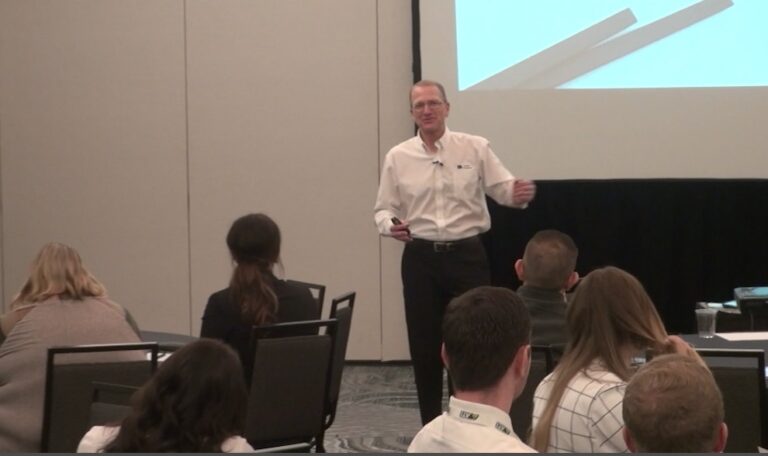3 steps to prevent lost sales
Shaun was diligently asking all the right questions and running right through the proper selling process with Alex, a dairy feed prospect we were calling on.
Shaun, “Are you where you want to be on production with your cows?”
Alex, “Well, of course not. We always want more,” he joked. “No, we’re doing good. Been with the feed mill for quite a while now and their nutritionist does pretty good with the cows.”
Shaun, “How long have you been with them?” Great question.
Alex, “Oh, probably 12 years!”
Shaun, “Wow, they must take care of you really well!” A perfect way to respond, I thought.
Alex, “Yeah, you’d think so.”
With that response, my alarm bells were going off and I was hoping that Shaun picked up on the opportunity that Alex just threw out there.
Shaun, “Well, that doesn’t sound too positive? Are they not taking care of you as good as you think they should?” Great, Shaun was on it.
Alex, “Oh, they are all right. It’s just that they no longer make their own feed and they bring mine in from their supplier, who is a couple of hundred miles away. So, we don’t always get top priority from their supplier.”
Shaun, “Wow, you know our feed mill is only 25 miles away. We deliver pretty much everything within 24 hours of ordering and often complete same day orders.”
Alex, “That would be great,”
Shaun continued from there to jump all over the problems of on time delivery to Alex’s farm. While this sounds like the perfect scenario, Shaun runs into a common trap and then loses the opportunity to make a sale.
I see this occur frequently in real life as I ride along on coaching sales calls as well as during role play exercises in my workshops. These are great opportunities to uncover the common trap and how to keep yourself from falling into it. The trap is self-imposed by salespeople. In this example, Shaun thinks he has found a need: reliable or faster delivery. What Shaun fails to do is establish the impact. Without establishing impact, Shaun gets to the end of the sales call and attempts to close the sale. This is when Alex slips out of the sale. He informs Shaun that poor delivery service is only occurring randomly, hasn’t happened in a while and he was reassured they had fixed their problems to prevent it in the future.
As with most of us, Shaun is now dead in the water. He spent his whole sales call trying to sell Alex of his prompt delivery skills. The reason this is such a common problem is that we feel like we are following right along with the proper selling steps: Ask questions to uncover a need, present to that need and then close. The problem is that we don’t dig far enough into the need and establish the impact. This leads to a lost sale as the customer informs you that the need is not as great as what was communicated.
Three Steps to Uncover Impact:
1. Understand the three components of Impact (value): Financial, Time, and Emotion
- Your solutions either produce more dollars in return, reduce the time it takes to accomplish a task or provide a positive emotion. That’s pretty much it when it comes to adding value. All roads lead back to these three value components.
- Never underestimate the importance of any one of the three. As salespeople, we tend to go straight to the financial return. We feel that all buyers are looking for a good deal, financially. So, we jump into the money discussion with too much emphasis.
- Time and emotion values may take longer to uncover and establish a value on, but this is time well spent in the selling process.
2. Dig a little deeper
With calibrated questions: In Shaun’s example, he could have asked,
- “What happens when you are not Top Priority?”
- “Is that something that happens often?”
- “What do you feed when they don’t deliver on time or run you out?”
- “What happens to milk production when the cows switch from one feed to another and then back again?”
- “What is the effect on your farm when that happens?”
- “What would it be like if you didn’t have to worry about that happening?”
This line of questioning may not occur like the dialogue above. It may stretch out over the course of the sales call or may even be incorporated into future sales calls on this farmer.
You may also find that the situation is not as dire as the farmer initially led onto. Sometimes, it may have only happened once in 12 years. Maybe it just happened the day before and the farmer is just blowing off some steam. No worries. Chalk this up as a possible advantage and continue your selling process with the prospect. At least you didn’t focus on it as the single reason this prospect should buy from you as Shaun did.
3. Get it in their words
- This may not always be possible. However, telling someone the value of a feature or benefit is not as impactful as having the customer put it into their own words.
- This is best achieved through continuing to ask good questions. Knowing when you have dug too deep or pried too much is the great talent you will develop over time. However, you will never develop that talent if you don’t try.
Calling on a customer many years ago, he informed me that my competitor had called on him recently. As my experience taught me, this could be just a gentle or playful jab from my customer or it could be a hidden message that he wanted to buy from my competition. So, I dug in with, “Oh, how’d that go?”
“They’re cheaper than you, you know?” my customer continued to jab.
I replied with my standard reply, “Well, I’m glad you agree that they have cheap products. You could put that on your brochure: We feed our animals the cheapest #$%^ we can buy!”
From there, we discussed the actual outcome of the competitor calling on my customer. They were cheaper, but only by 50 cents on a $250 product. The salesman had become a little aggressive when my customer refused to switch his business for a 50 cent per ton savings. We had worked together on his nutrition program for over 10 years and thankfully he valued our relationship more than 50 cents. This lack of establishing value and the impact of that value promptly got my competitor kicked off the farm by my customer.
Imagine the outcome for my competitor had he asked just one more question that day, “How significant is 50 cents/ton to your operation?” What would my customer have said? Would the answer have provided my competitor with a good understanding of how my customer made buying decisions? Unfortunately, we’ll never know because he jumped on a need to quickly and failed to establish the impact.
[fusion_builder_container hundred_percent=”yes” overflow=”visible”][fusion_builder_row][fusion_builder_column type=”1_1″ background_position=”left top” background_color=”” border_size=”” border_color=”” border_style=”solid” spacing=”yes” background_image=”” background_repeat=”no-repeat” padding=”” margin_top=”0px” margin_bottom=”0px” class=”” id=”” animation_type=”” animation_speed=”0.3″ animation_direction=”left” hide_on_mobile=”no” center_content=”no” min_height=”none”]
[/fusion_builder_column][/fusion_builder_row][/fusion_builder_container]




